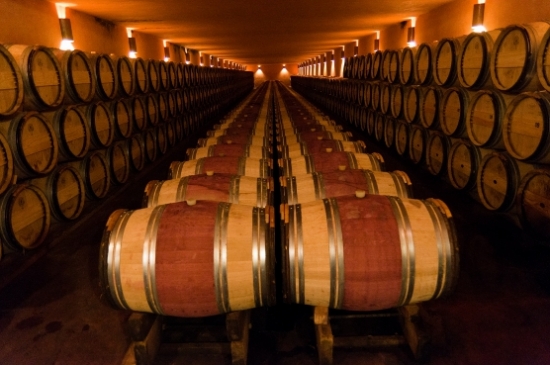
Wine can be for most a never-ending yet enticing mystery. Israel’s prestigious Margalit Winery even calls their heralded Bordeaux style blend “Enigma”. One of the least understood yet quite relevant aspects of quality winemaking is the role oak aging plays in making good wine even better.
Those who buy and eventually drink fine wines generally accept that most red wines and some white wines can often benefit from aging in oak barrels. It’s why most wineries from around the world use up valuable space on the back label of a wine bottle telling potential consumers how many months or even years the wine benefited from its gestation in barrels. It’s also why they use up a lot of real estate (and assets) of a winery storing those same wines rather than releasing them just after completing fermentation.
There are two primary sources for oak used in wine barrels: oak from France and oak from the United States. There are other sources, such as Hungary and Bulgaria, but generally speaking the most sought after and most bragged about sources of oak being used in barrels are French and American oak. Why?
Well, first they have the most consistent track record of producing oak that imparts the flavors, aromas, tannins, “mouth feel” and complexity that winemakers and consumers apparently enjoy. As I travel to wineries, I routinely check which barrels they’re using to age their wines to see if I can recognize, through tasting and smelling the wine, what cooperages (barrel manufacturers) they use, and how those coopers and different types of oak influence the wine.
That being said, how does a winemaker decide how much oak and what oak to expose their wines to? Well, it depends on what they envision their final wine to be. French oak and American oak often impart different flavors, aromas, tannins and intensity on their wine and more often than not that can steer many winemakers to which country they source their oak from and also what cooperage they trust to incubate each vintage. I’ve often heard winemakers refer to their temperature-controlled barrel rooms as nurseries and I sometimes feel I should talk in hushed tones in a barrel room like I’m visiting a maternity ward in a hospital or some sacred shrine (and for some a barrel room of a great winery is just that). Visit the barrel room at the Castel Winery in the Judean Hills or Chateau Golan on top of the Golan Heights and they seem like temples for those who seemingly worship wine.
French oak is the more traditional choice and more expensive as well. So rightly or wrongly it’s more often associated with higher-end wines. French oak can often be twice the price of other oak producers and it’s only natural that the cost is reflected in the price of any wine it nurtures. It’s typically thought of as more gentle than American oak, imparting a subtle bouquet of clove, leather, tobacco, nutmeg, mint, earthiness and even eucalyptus.
Conversely, American oak is thought to deliver more “oakiness” and deliver more intensity of flavor to wines it embraces. It’s more often used in New World in-your-face wines than more elegant Old World European wines. Coconut, vanilla, caramel and cinnamon are typical flavors that attract winemakers to buy American oak barrels.
Winemaker Roni Saslove of Israel’s prestigious Saslove Winery recently shared with me some of the lessons she has learned about oak aging. For instance, Roni explained: “What isn’t very well understood is that oak can be as complex as wine grapes themselves and just as in a vineyard where grapes from one row can produce dramatically different wines from those from an adjacent row just meters away, oak from different cooperages and even within the same cooperage but from different parts of the same tree can create a barrel that produces distinctly different wines”. She has become so familiar with the tastes, aromas and mouth feel of many cooperages that she can often pick out the barrel maker of wines she blind tastes. Roni and her father Barry, the founder of the winery, often give captivating barrel tastings that help demonstrate the distinction between using new and old oak from both American and French forests.
Just as most wine novices must train themselves to pick out individual aromas and tastes inherent to the grapes in a wine, it is possible to train yourself to pick out the different oak influences. Even if you don’t become that adept at appreciating how oak makes a wine you like better, you can become more confident that when a reliable winery says they’ve oak-aged their wines it’s adding a complexity of flavors and aromas as well as texture that will make every sniff and mouthful of their efforts more rewarding.
David Rhodes is a consulting sommelier & wine educator living in Raanana. You can contact him with your questions about wine at israeliwineguy@gmail.com
 dear editor 159 magazine
dear editor 159 magazine OVERNIGHT OAT & SESAME BARS
OVERNIGHT OAT & SESAME BARS IN THE SWIM
IN THE SWIM-1516356428.jpg) Hand in Hand Food Pantry
Hand in Hand Food Pantry Forever Slim
Forever Slim Food Foolish
Food Foolish David Rhodes
David Rhodes